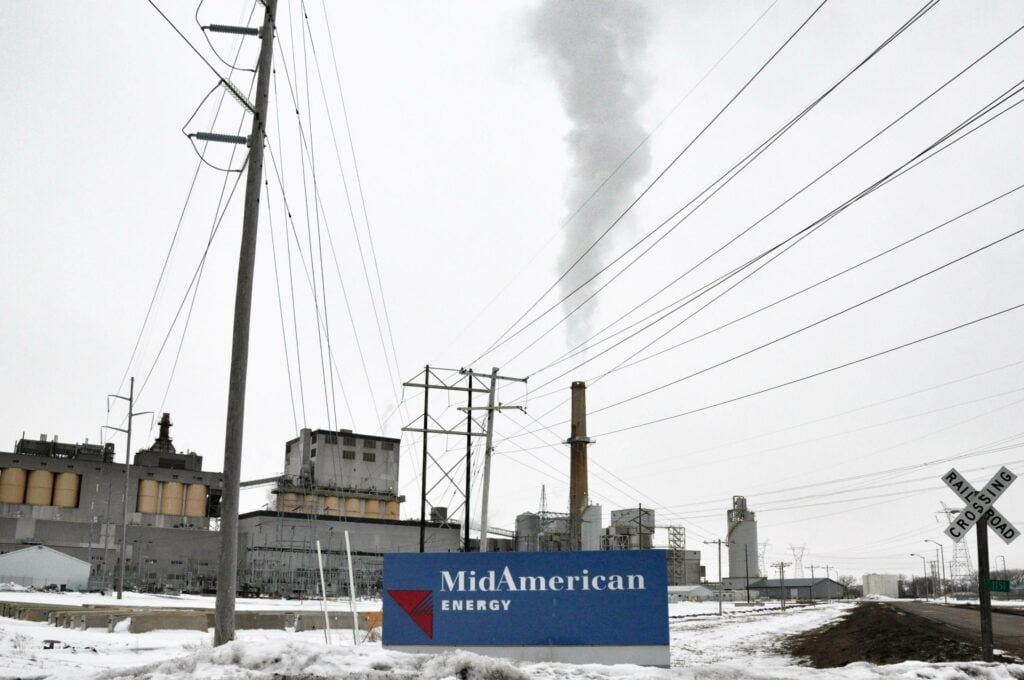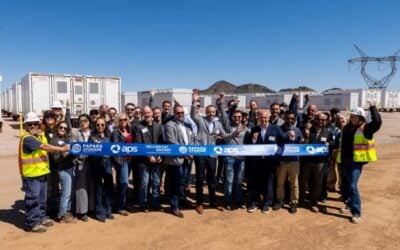
US utility company MidAmerican’s plan to continue burning coal at five Iowa power plants will be environmentally harmful and more costly than choosing low-carbon alternatives.
That was the core of joint testimony from a coalition of environmental groups, which made a damning assessment of the utility’s latest plans to add significant renewable energy capacity but keep its coal-fired plants running.
Enjoy 12 months of exclusive analysis
- Regular insight and analysis of the industry’s biggest developments
- In-depth interviews with the industry’s leading figures
- Annual digital subscription to the PV Tech Power journal
- Discounts on Solar Media’s portfolio of events, in-person and virtual
MidAmerican Energy Company, serving around two-thirds of Iowa as well as parts of Illinois, South Dakota and Nebraska, has put before the regulatory Iowa Utilities Board its plan, called Wind PRIME.
Through Wind PRIME, MidAmerican would add 2,042MW of wind and 50MW of solar PV to its portfolio but hold fast to its coal as well. According to the utility company, in 2021, its generation capacity was 62% wind, 23% coal, 11% natural gas and 4% nuclear or other sources.
Earlier this week, Midwestern non-profit Environment Law & Policy Center, Iowa Environmental Council and advocacy group The Sierra Club filed a joint testimony with the Iowa Utilities Board.
The groups accused MidAmerican of failing to justify its Wind PRIME plans and noted that the utility’s own analysis of its benefits “relies on MidAmerican’s ageing coal resources for capacity, overlooking the significant costs that could be avoided by transitioning away from those resources and replacing them with alternatives”.
MidAmerican’s coal plants make it Iowa’s biggest carbon polluter, the groups pointed out. They noted that quantitative modelling was not used to determine the Wind PRIME resource mix. Instead, MidAmerican chose its preferred mix based on a combination of options that would earn the highest market revenues or federal tax credits.
Utility’s approach ‘not reasonable’
Instead, a portfolio balancing battery storage and solar PV with a lesser amount of wind, coupled with the retirement of the five coal power stations by 2035 could deliver US$120 million in cost savings versus Wind PRIME, according to analysis by Synapse Energy Economics and Energy Futures Group.
It would also result in 25 million tonnes less of carbon emissions. Commissioned by the coalition of environmental organisations, the analysis found it would be much better for MidAmerican to pick a more diverse resource mix than relying almost exclusively on coal and wind.
“Diversified clean energy, coupled with storage and a robust transmission system, can provide all of our energy needs in Iowa and at a lower cost,” Iowa Environmental Council programme director Kerri Johansen said.
“The status quo has led to escalating uncertainty around extreme weather, high fuel costs, and fears of energy shortages. This is not an acceptable future.”
Johansen urged instead that MidAmerican plan and invest in a “100% clean system,” to “take steps now to study upgrades to the transmission system and to start development of adequate battery storage and solar”.
Devi Glick of Synapse commented that while the modelling approach taken by the utility “might be reasonable for a merchant utility,” selecting its resource mix based on maximised energy revenues and federal tax credits was “not a reasonable approach for a rate-regulated utility with captive ratepayers,” and would keep coal plants running for another 20 years.
Under Synapse’s modelling, on a platform that has been used already in 17 other US states to determine lowest-cost electricity portfolios, it was found that only about a third of the 2GW+ of wind proposed by MidAmerican would actually be required.
Instead, the utility should add 1,600MW of battery storage by 2030, 3,700MW of solar PV by 2035 – including the proposed 50MW project already in the plan – along with around 700MW of wind power. Three of its five coal plants are uneconomic and should be retired immediately, and the remaining two by 2035, according to Synapse’s modelled outcome.
Numerous other Iowan groups have stepped forward to endorse the group’s advocacy and joint testimony, some of which pointed out various other negative impacts of coal pollution, such as Iowa’s high rates of childhood asthma.
Despite MidAmerican’s continued reliance on coal, according to figures published by the American Clean Power Association towards the start of this year, Iowa ranked third among US states in 2021 for installed clean energy capacity with 12.3GW, behind only Texas (45.1GW) and California (22.9GW).
“Planning to eliminate these expensive, dirty sources of generation and replacing them with renewables made sense even before the benefits of the Inflation Reduction Act were available,” Environmental Law & Policy Center senior attorney Josh Mandelbaum said.
“It is critical that MidAmerican plan for a clean energy transition in a transparent manner using industry best practices before investing billions of dollars of Iowans’ hard-earned money.”
The groups’ joint testimony before the Iowa Utilities Board can be found here.
Energy-Storage.news’ publisher Solar Media will host the 5th Energy Storage Summit USA, 28-29 March 2023 in Austin, Texas. Featuring a packed programme of panels, presentations and fireside chats from industry leaders focusing on accelerating the market for energy storage across the country. For more information, go to the website.






